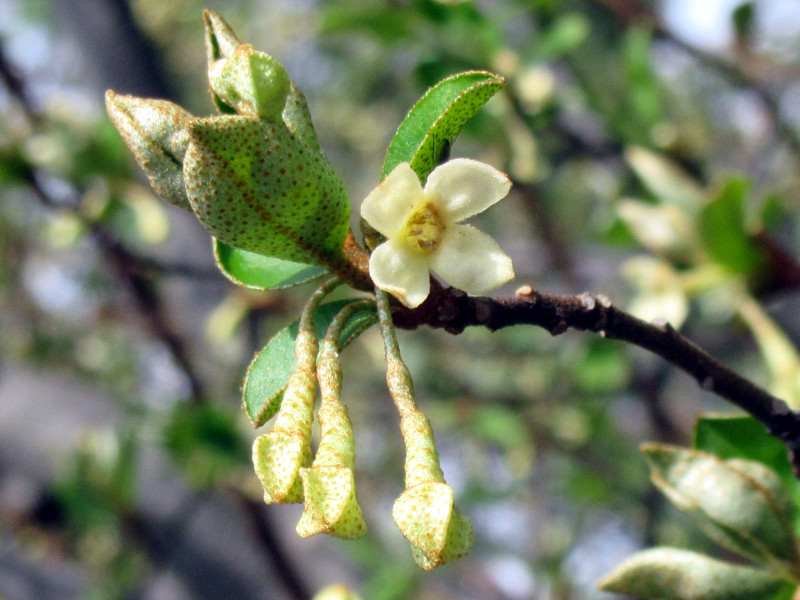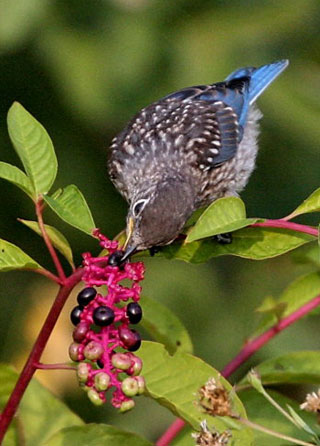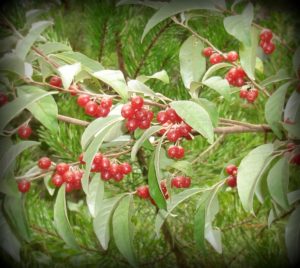Elaeagnus Multiflora: The Superfood Shrub That's Easy To Grow
Elaeagnus multiflora, also known as the autumn olive, is a fast-growing, drought-tolerant shrub that is native to Asia. It is a popular choice for landscaping because it is easy to care for and provides a beautiful display of white flowers in the spring and fall. However, Elaeagnus multiflora is also a superfood that is packed with nutrients.
The berries of Elaeagnus multiflora are a good source of vitamin C, vitamin K, and fiber. They also contain antioxidants, which can help protect the body against damage from free radicals. In addition, the berries have a sweet, tart flavor that makes them a delicious and healthy snack.
If you are looking for a superfood shrub that is easy to grow, Elaeagnus multiflora is a great option. It can be grown in a variety of climates and soils, and it requires very little maintenance. Simply plant the shrub in full sun or partial shade, and water it regularly during the first year. Once the shrub is established, it can tolerate drought conditions.
To harvest the berries, simply wait until they are ripe and then pick them off the shrub. The berries can be eaten fresh, cooked, or dried. They can also be used to make juice, jam, or jelly.
In addition to being a superfood, Elaeagnus multiflora also has a number of other benefits. The shrub can help to attract pollinators to the garden, and it can also provide food and shelter for wildlife. Elaeagnus multiflora is also a good choice for erosion control.
If you are looking for a beautiful, easy-to-grow, and superfood-rich shrub, Elaeagnus multiflora is a great option.
Here are some additional benefits of Elaeagnus multiflora:
- The leaves of Elaeagnus multiflora contain compounds that can help to lower blood pressure and cholesterol levels.
- The bark of Elaeagnus multiflora can be used to make a tea that has anti-inflammatory and antioxidant properties.
- The berries of Elaeagnus multiflora can help to boost the immune system and protect against cancer.
How to Grow Elaeagnus multiflora
Elaeagnus multiflora is a relatively easy shrub to grow. It can be planted in full sun or partial shade, and it prefers well-drained soil. The shrub is drought-tolerant, but it will benefit from regular watering during the first year.
To plant Elaeagnus multiflora, dig a hole that is twice as wide as the root ball. Place the shrub in the hole and backfill with soil. Water the shrub well and mulch around the base to help retain moisture.
Elaeagnus multiflora does not require a lot of pruning. However, you may want to trim the shrub in the spring to remove any dead or damaged branches. You can also trim the shrub to keep it in shape.
Conclusion
Elaeagnus multiflora is a beautiful, easy-to-grow, and superfood-rich shrub that is a great addition to any garden. If you are looking for a shrub that is both ornamental and beneficial, Elaeagnus multiflora is a great option.
I hope this information is helpful. If you would like to learn more about Elaeagnus multiflora, please visit the Home Gardening website. They have a wealth of information on this plant, including its uses, history, and cultivation.
FAQ of elaeagnus multiflora
Q: What is Elaeagnus multiflora?
A: Elaeagnus multiflora, also known as goumi, is a deciduous shrub or small tree native to China, Japan, and Korea. It is grown for its edible fruits, which are small and yellow-orange in color. The plant is also attractive for its silvery-gray foliage and fragrant flowers.
Q: How to care for Elaeagnus multiflora?
A: Elaeagnus multiflora is a relatively easy plant to care for. It prefers full sun but can tolerate partial shade. The plant is drought-tolerant and does not require much fertilizer. However, it is important to water the plant regularly during the first year after planting.
Q: How to propagate Elaeagnus multiflora?
A: Elaeagnus multiflora can be propagated by seed, cuttings, or layering. Seed propagation is the most common method. Seeds should be sown in the spring in a well-drained soil. Cuttings can be taken in the spring or summer. Layering is a more difficult method, but it can be successful.
Q: What are the pests and diseases of Elaeagnus multiflora?
A: Elaeagnus multiflora is not susceptible to many pests or diseases. However, the plant can be affected by aphids, scale insects, and powdery mildew. Aphids can be controlled with insecticidal soap or neem oil. Scale insects can be controlled with horticultural oil. Powdery mildew can be controlled with a fungicide.
Q: How to harvest Elaeagnus multiflora fruits?
A: Elaeagnus multiflora fruits are ripe when they are yellow-orange in color and slightly soft. The fruits can be eaten fresh or used in pies, jams, and jellies.
Image of elaeagnus multiflora
- Close-up of a single elaeagnus multiflora flower. The flower is white with yellow stamens.
- A cluster of elaeagnus multiflora flowers. The flowers are arranged in a raceme.

- A mature elaeagnus multiflora shrub. The shrub is covered in white flowers.

- A young elaeagnus multiflora tree. The tree has dark green leaves and white flowers.

- A close-up of the leaves of an elaeagnus multiflora. The leaves are oval-shaped and have a silvery underside.

- A ripe elaeagnus multiflora berry. The berry is red and has a white bloom.

- A cluster of ripe elaeagnus multiflora berries. The berries are arranged in a raceme.

- A bird eating an elaeagnus multiflora berry. The bird is a robin.

- A squirrel eating an elaeagnus multiflora berry. The squirrel is a grey squirrel.

- A landscape view of an elaeagnus multiflora shrub. The shrub is in a garden setting.
Post a Comment for "Elaeagnus Multiflora: The Superfood Shrub That's Easy To Grow"